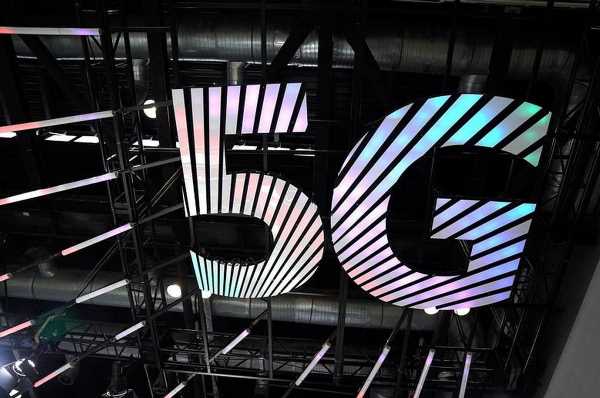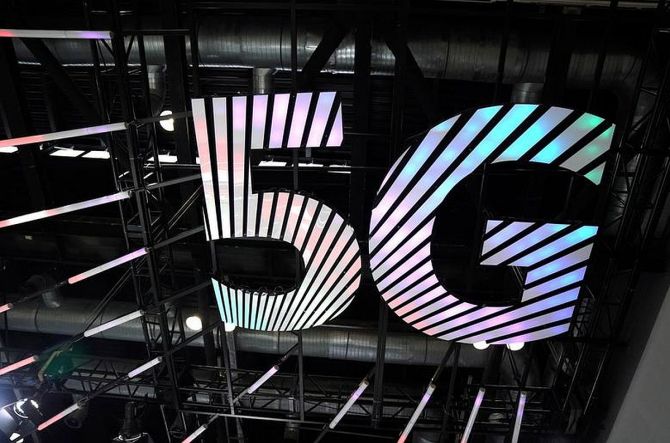India’s could see fastest rollout of 5G services globally
The country’s two top telcos, Reliance Jio and Airtel, are working overnight to undertake one of the fastest global roll-outs of 5G services in any country just a month down the line.
India might be late in the game (already 70 countries have some kind of 5G and there are 698 million 5G subscribers across the world), but it’s moving at breakneck speed.
In his speech at the Reliance Industries AGM, Mukesh Ambani unveiled his plan to roll out the fastest 5G network in the world, starting from four metros in October but hitting every town taluka and tehsil — there are some 5,600 of them — in the country in 18 months.
The investment tag: Rs 2 trillion.
Not to be outdone, Airtel has also set March 2024 as the deadline to launch a pan-India 5G service and has put together detailed roll-out plans for as many as 5,000 towns.
Research agency OMDIA projects that with 369 million 5G subscriptions (over half the total global 5G subscriptions currently), India will be just behind China and the US in world rankings by 2026.
India would have ousted Japan from the third spot with 147 million customers.
In terms of user penetration, however, India would be behind because of its large low-value mobile base.
According to the GSM Association’s projections, by 2025, the US would lead user penetration at 63 per cent, followed by Europe at 44 per cent, and China at 52 per cent.
But even one year later India’s share of 5G would be around 30 per cent and 4G will continue to hold sway.
India took four to five years for 4G, a critical jump in mobile technology, to be available across the country.
With 5G, operators want to squeeze the time frame to 18-24 months.
Vendors said mobile operators are looking to go with 5G in about 30,000 towers in the first phase mostly in the top 10 cities, which could translate into over 200,000 radios.
But these aggressive targets come with challenges.
“We have enough radios for October but there are challenges in supply — for instance, uncertainty of components manufactured in China due to sudden orders for factory closures due to Covid. We have our fingers crossed,” says a senior executive of one of the top vendors.
But checks by Bank of America (BofA) research analysts say that Jio might be more aggressive rolling out 5G in 50,000-60,000 sites per month.
One key advantage, which will enable a quicker 5G roll-out, is the availability of a 5G smartphone-ready market.
According to OpenSignal, over 9.75 per cent of smartphones across India are already 5G-capable.
Because of the more advanced specifications these customers already experience over 40 per cent faster download speeds than an average non-5G phone user.
It is a market tailor-made to shift and upgrade to 5G services.
That apart, from 2022 as much as 30-40 per cent of all smartphones being shipped are on 5G so the number of such phones will only go up month-on-month.
In contrast, there was no such market during 4G.
Jio, for instance, had to build an ecosystem of such phones by getting into contracts to manufacture them from vendors because local mobile device players were hesitant about investing in the new technology.
And that took time.
Not only do customers have a lot of 5G-enabled phones — the 70-80 million who have bought them can enable them to work on 5G standalone networks by October through a remote software upgrade so that it can be used on the Jio network.
New phones being shipped will also have standalone software built in.
Airtel, however, will be running its network on a 5G non-standalone platform (where the core still is in 4G but radios are 5G).
What is also interesting is the spread of 5G phone ownership is not limited to advanced circles and big cities.
OpenSignal says Bihar, for instance, has 9.3 per cent of 5G-enabled phones, just behind Andhra Pradesh at the top slot.
And both Uttar Pradesh East and Rajasthan with a 7.2 per cent share of all 5G-enabled phones have a bigger share than Delhi and Mumbai.
The other big challenge is use cases.
Clearly there are no killer apps to monetise yet.
Jio is looking at fixed wireless access as a key use case and expects to connect over 100 million homes, as its strategy of rolling out fibre-to-the-home has been very slow.
Two, by going with a standalone it could slice the network offering for customised services to enterprises as well as retail customers such as cloud gaming.
It could also leverage the Indian Premier League (whose digital rights it has bought) to offer customers immersive viewing experiences.
But many say waiting for use cases is not the right business strategy.
A senior executive of a chip maker that supplies to telcos said: “Once 5G starts, Indian developers and companies will find myriad uses for 5G which we cannot even imagine now.
“Unlike other developed countries, there are already thousands of developers who are working on various options.”
That could well be the game changer.
India’s roll-out schedule
- By end of December 2023, most towns, tehsils and talukas will be connected with 5G
- In the first phase the concentration is on top 10-11 cities, there will be a requirement of over 2 lakh 5G radios
- Telcom gear makers say that sudden closures of factories in China could impact the supply chain
- More than 80 million consumers have bought 5G phones; they are the first to change to 5G. That number will go up as 30-40 per cent of smartphones being shipped this year will be 5G-enabled
- 5G phone spread across circles, which one might not consider advanced
- Mobile device makers are already working for software upgrades to enable phones to work on standalone 5G network of Reliance Jio
- Telcos expect use cases to develop once service is rolled out
Source: Read Full Article


